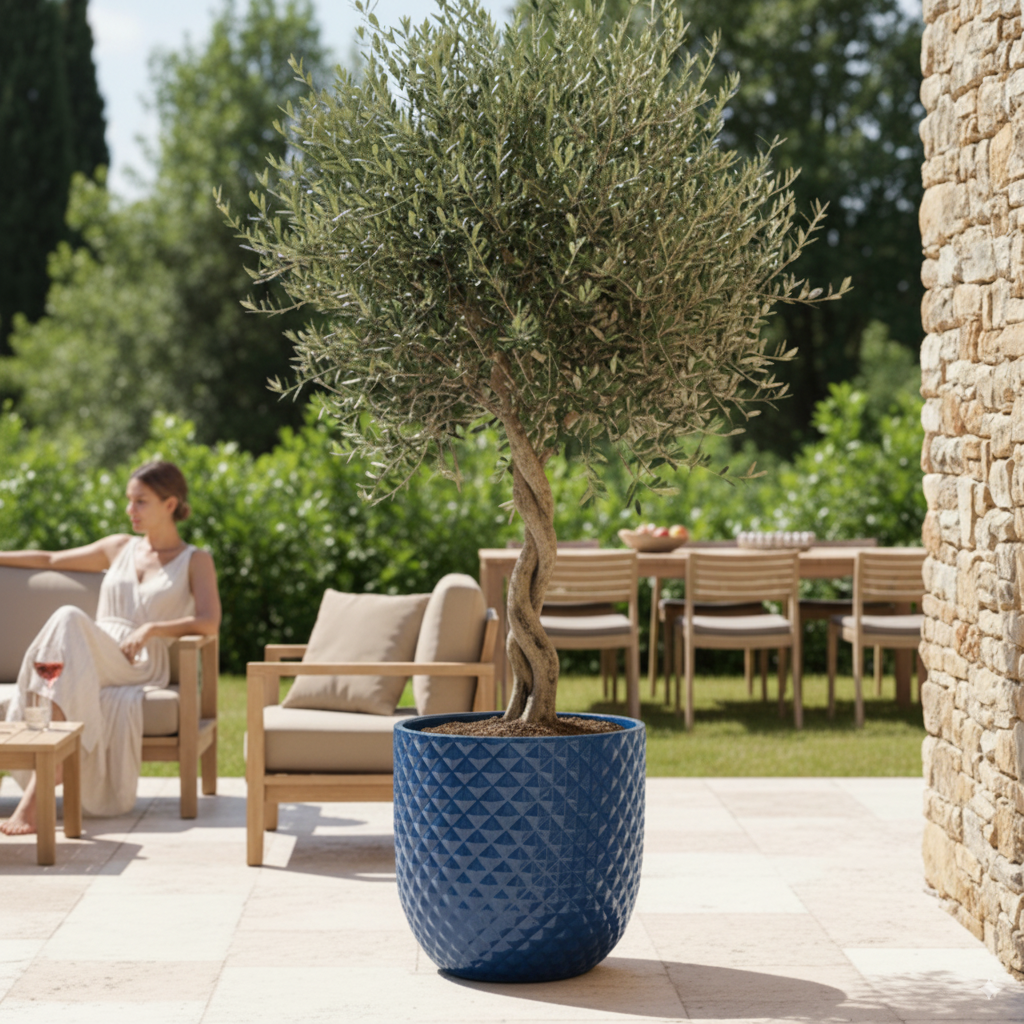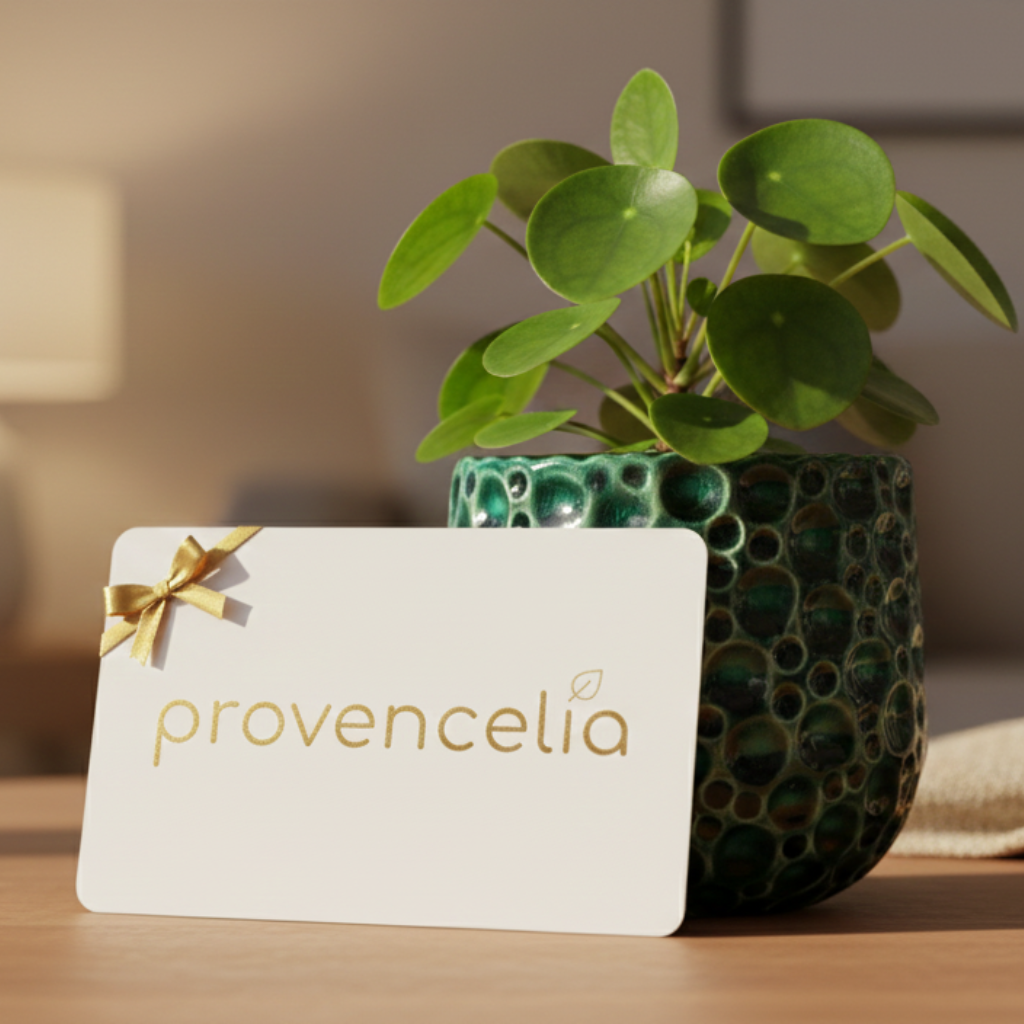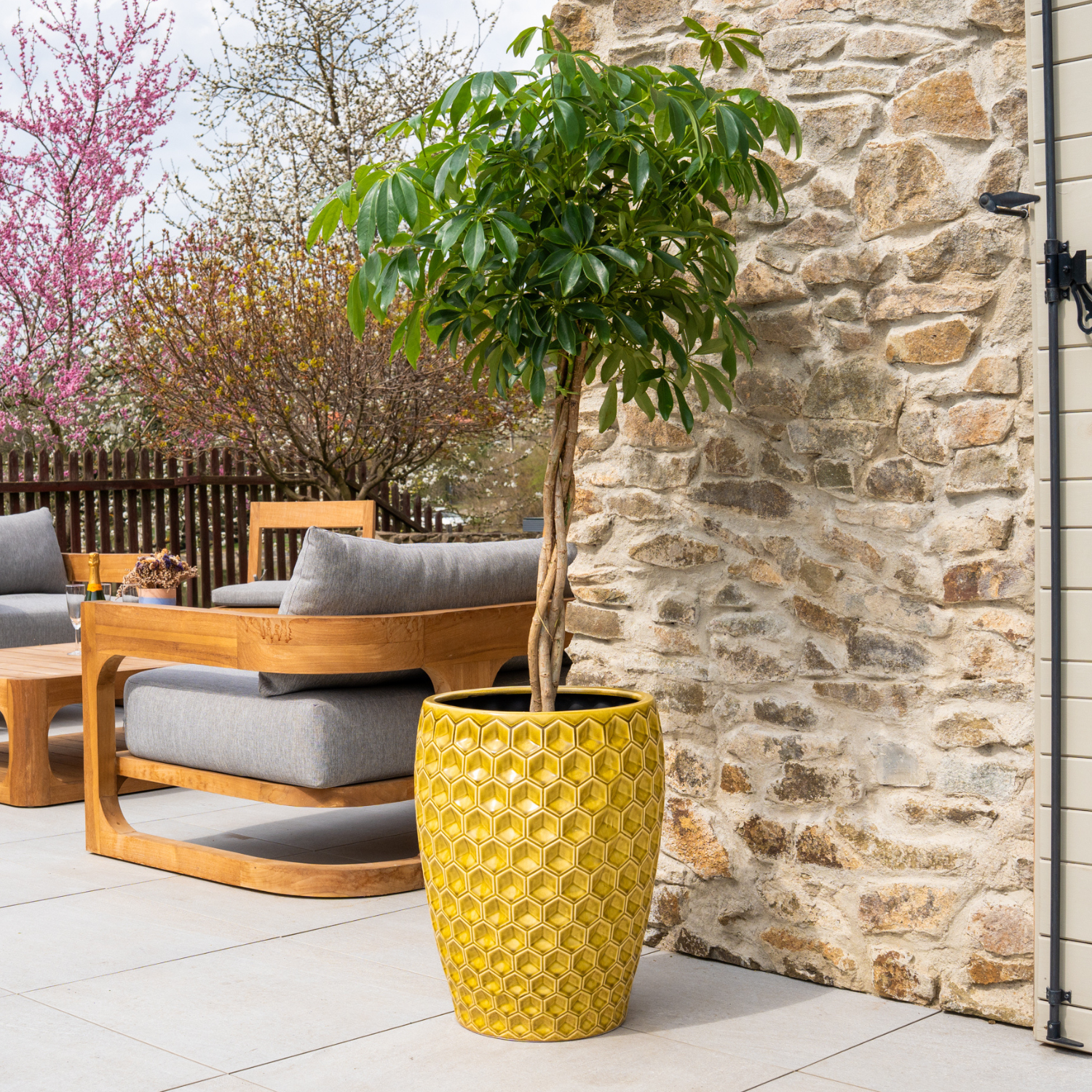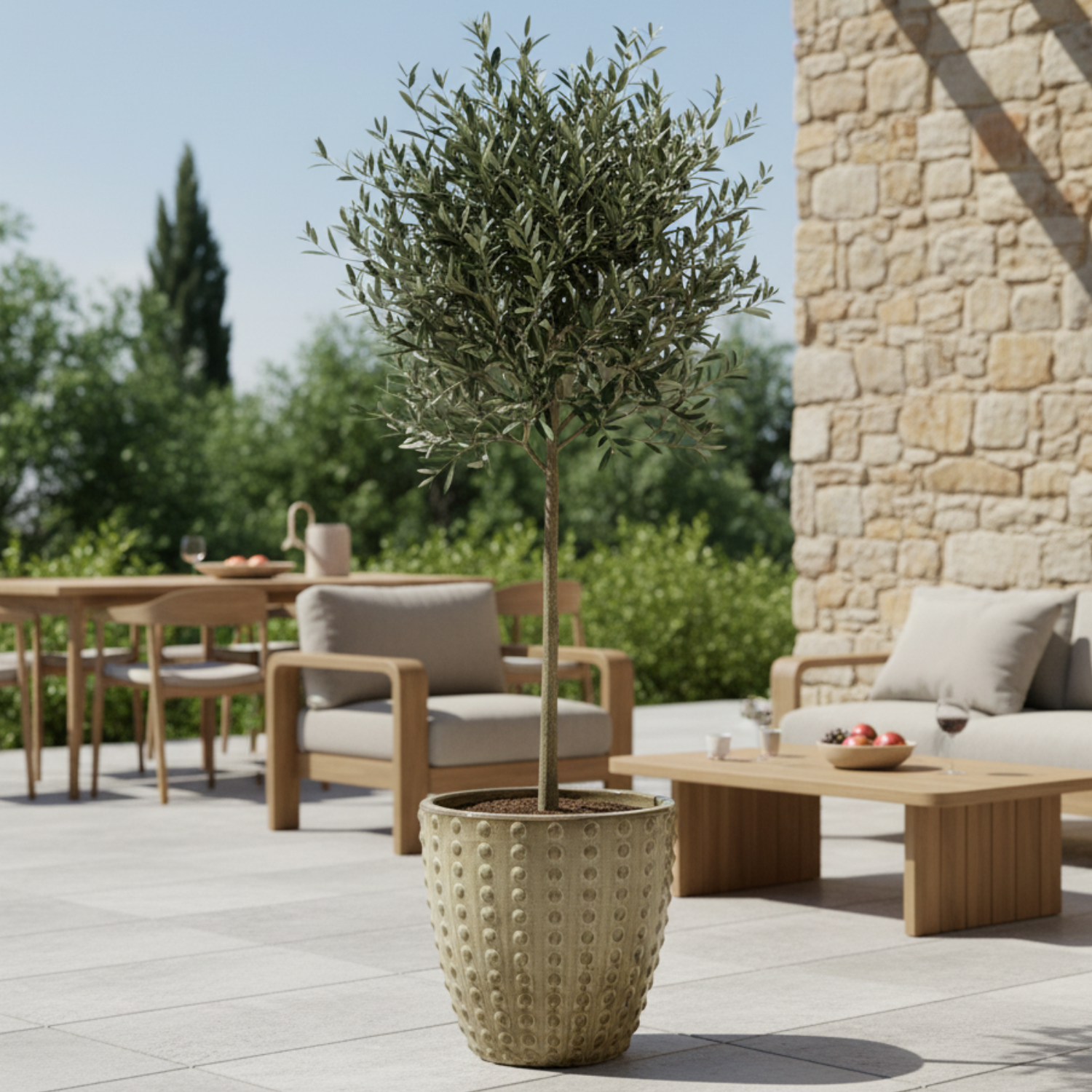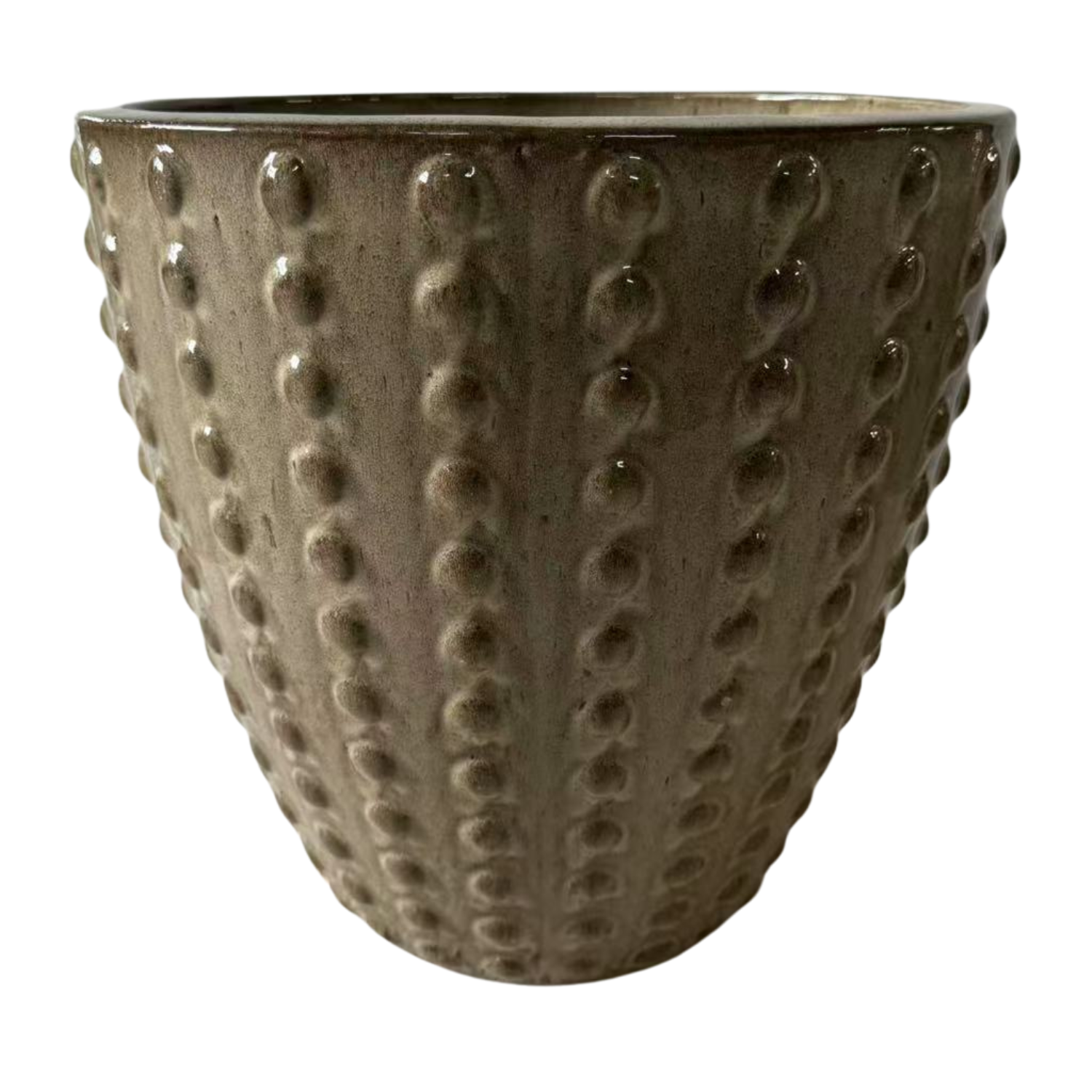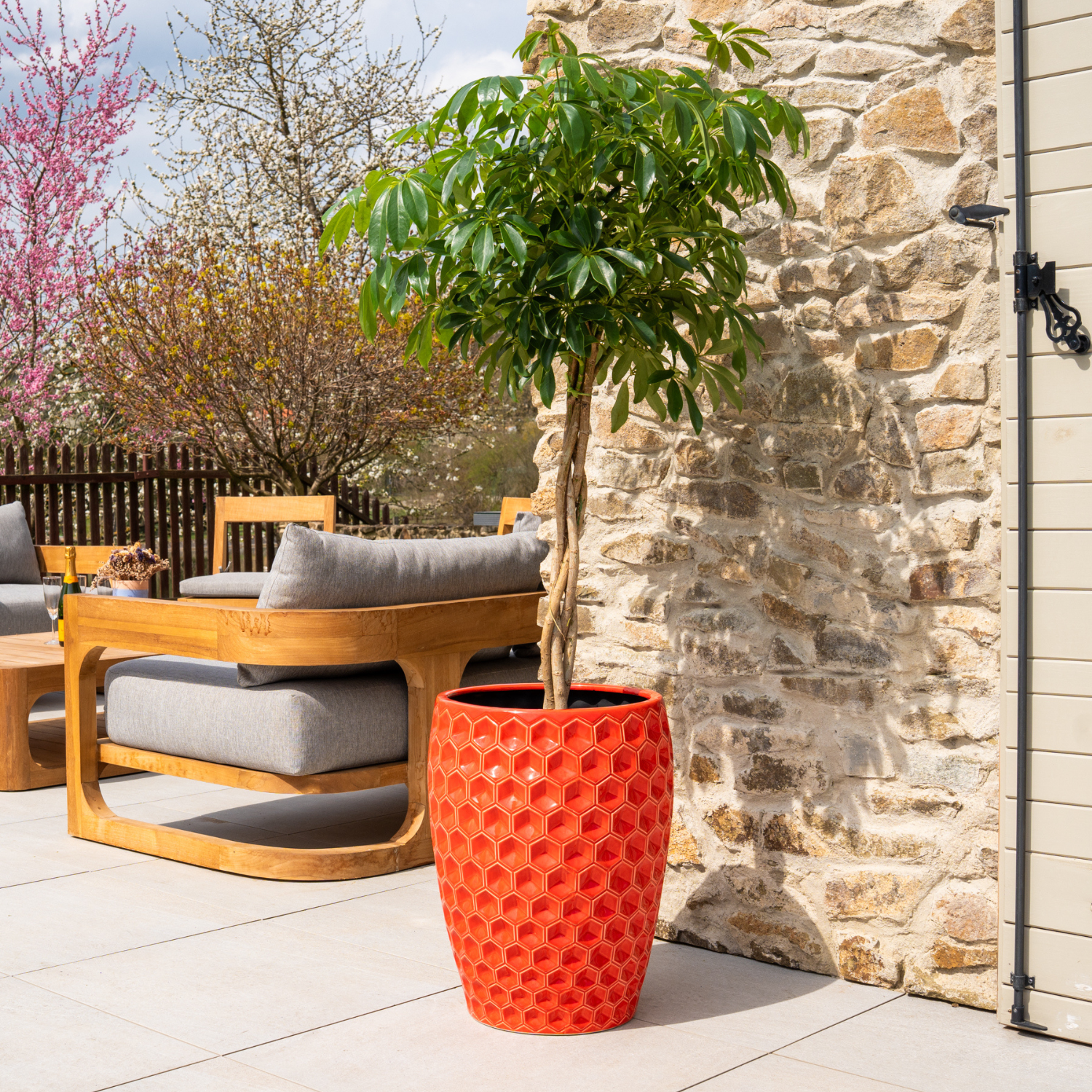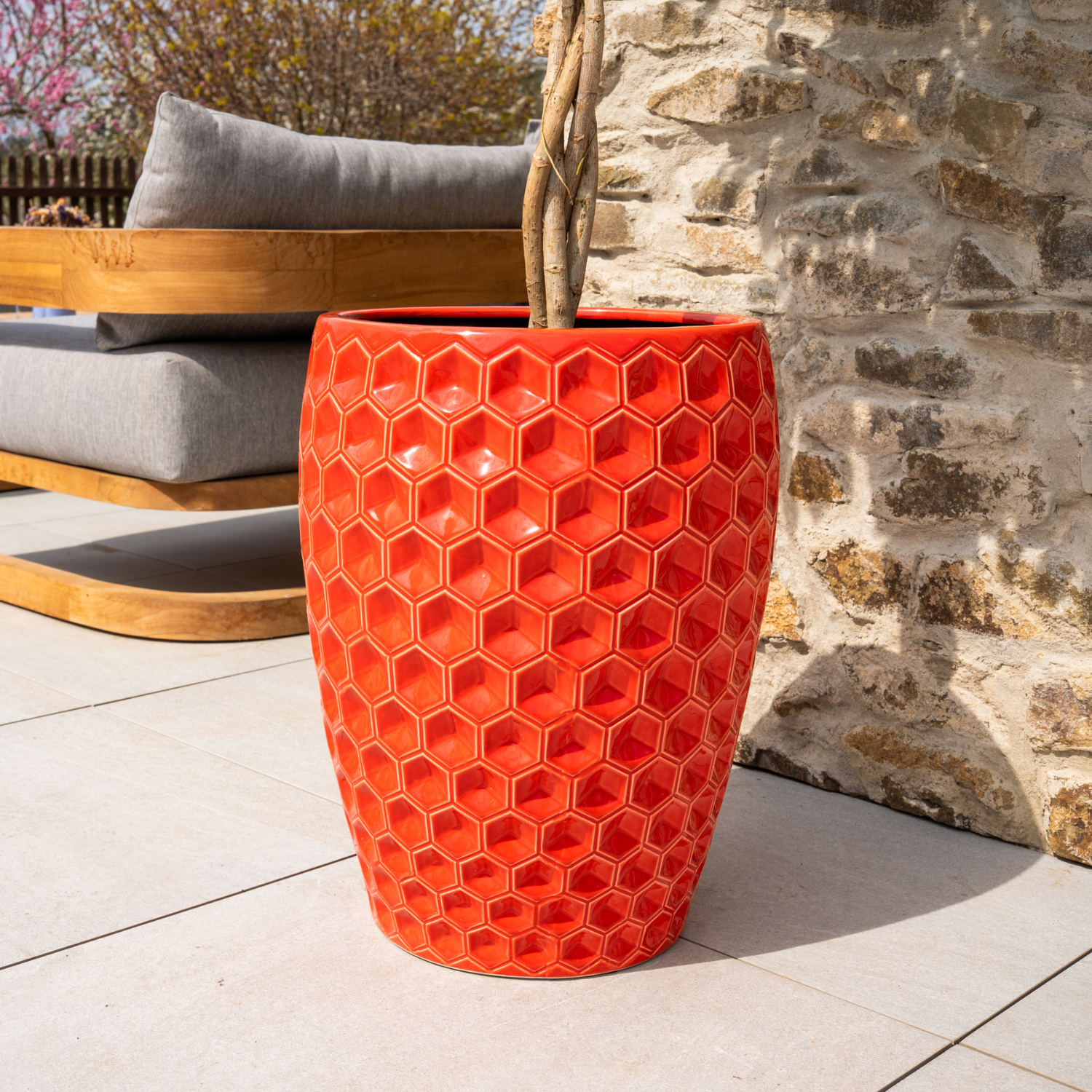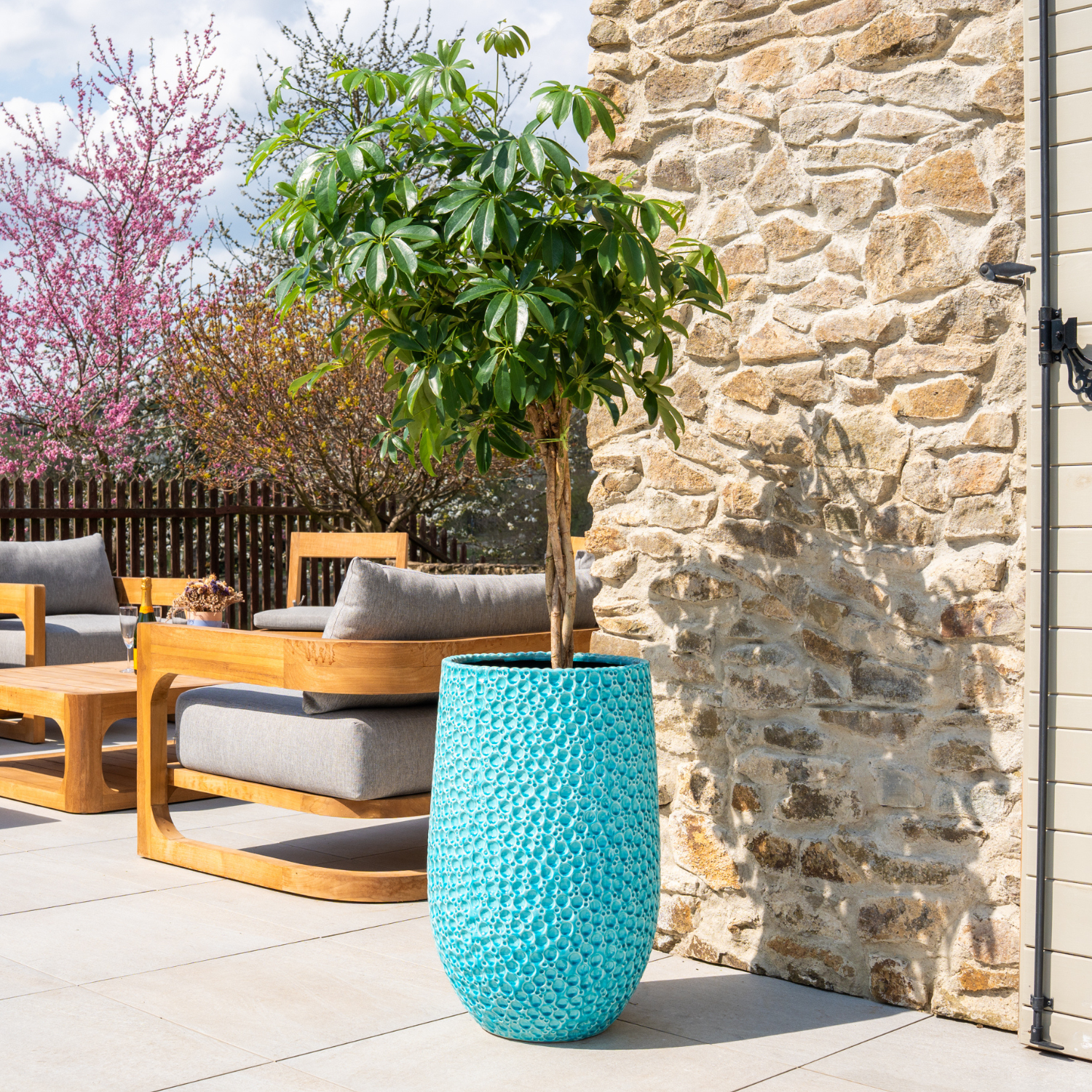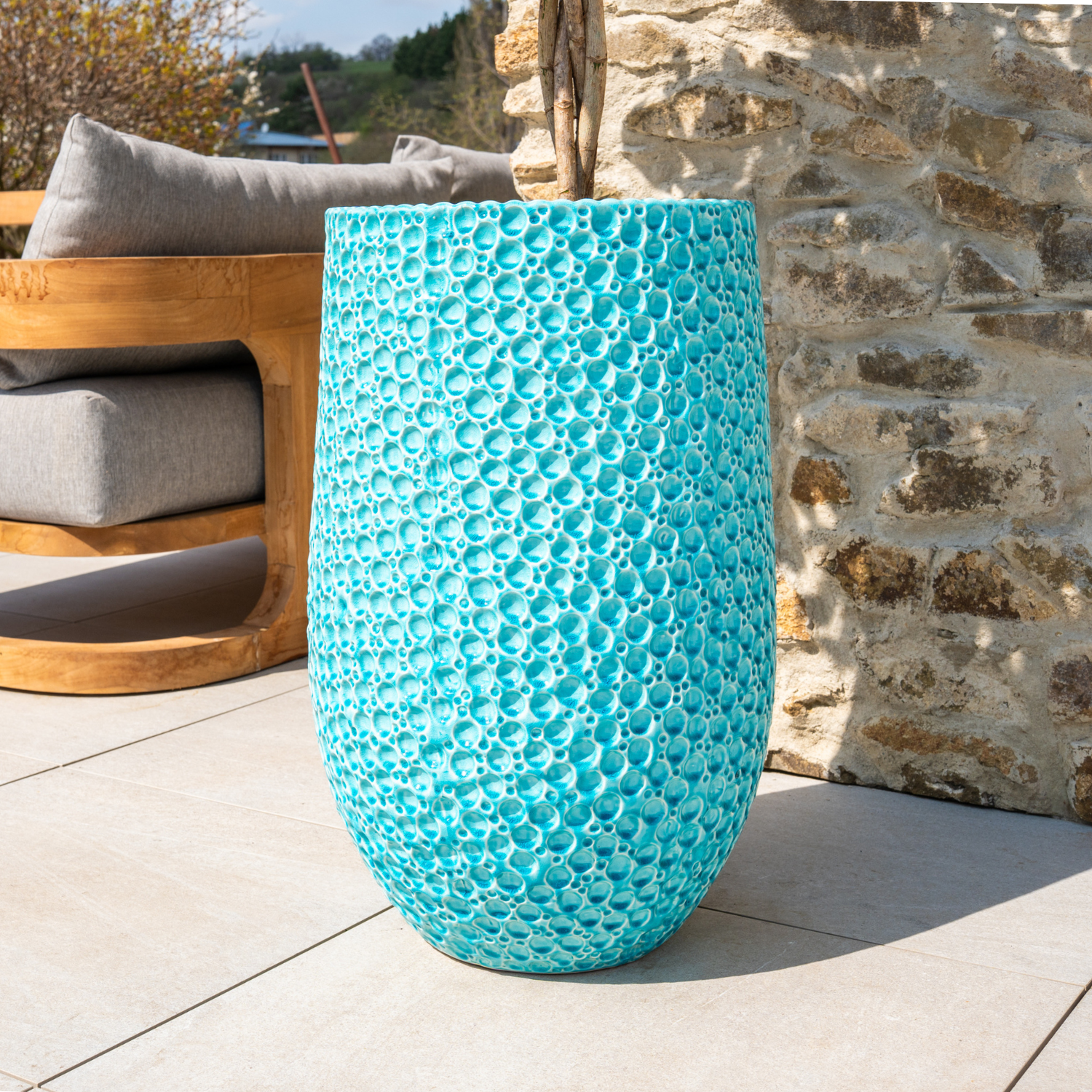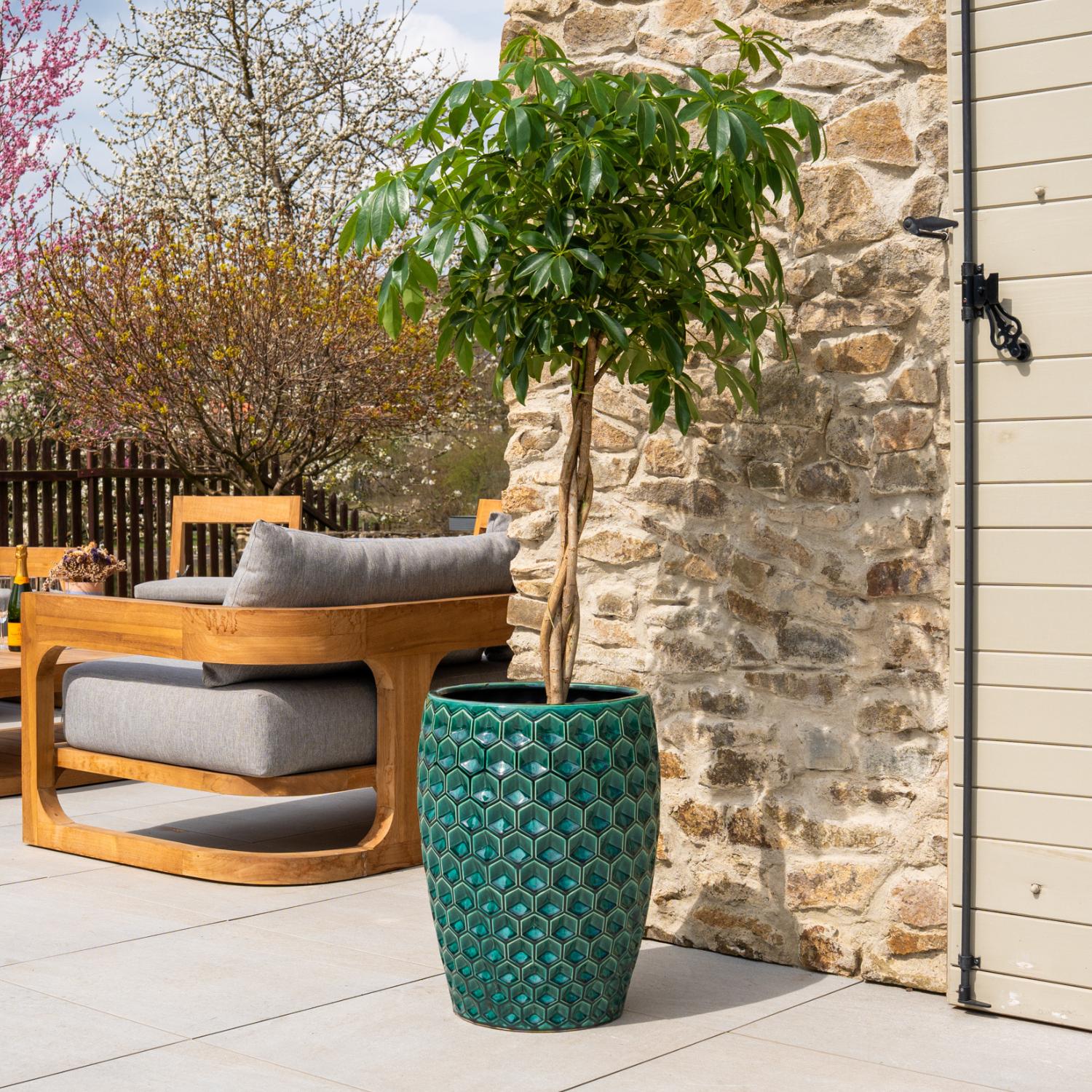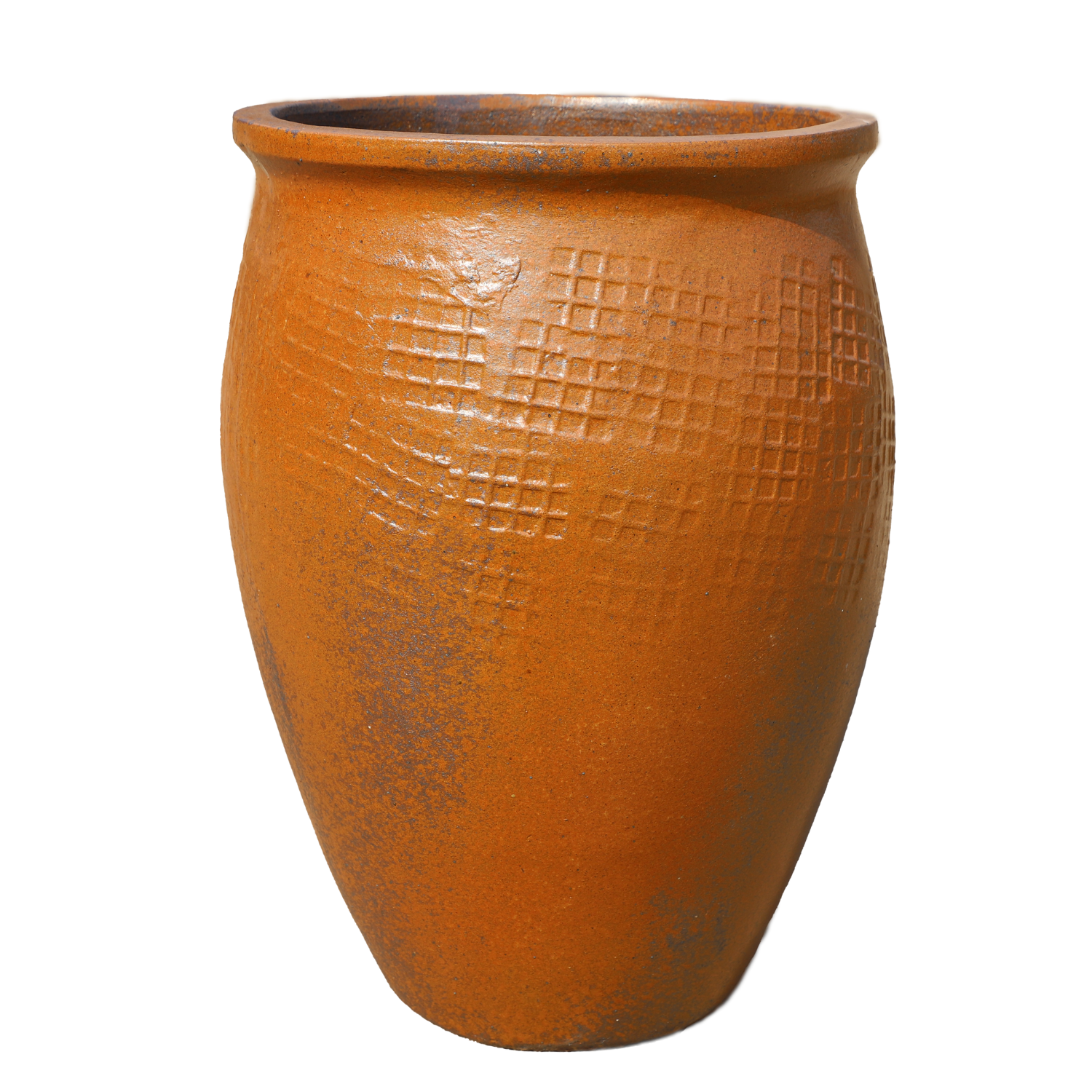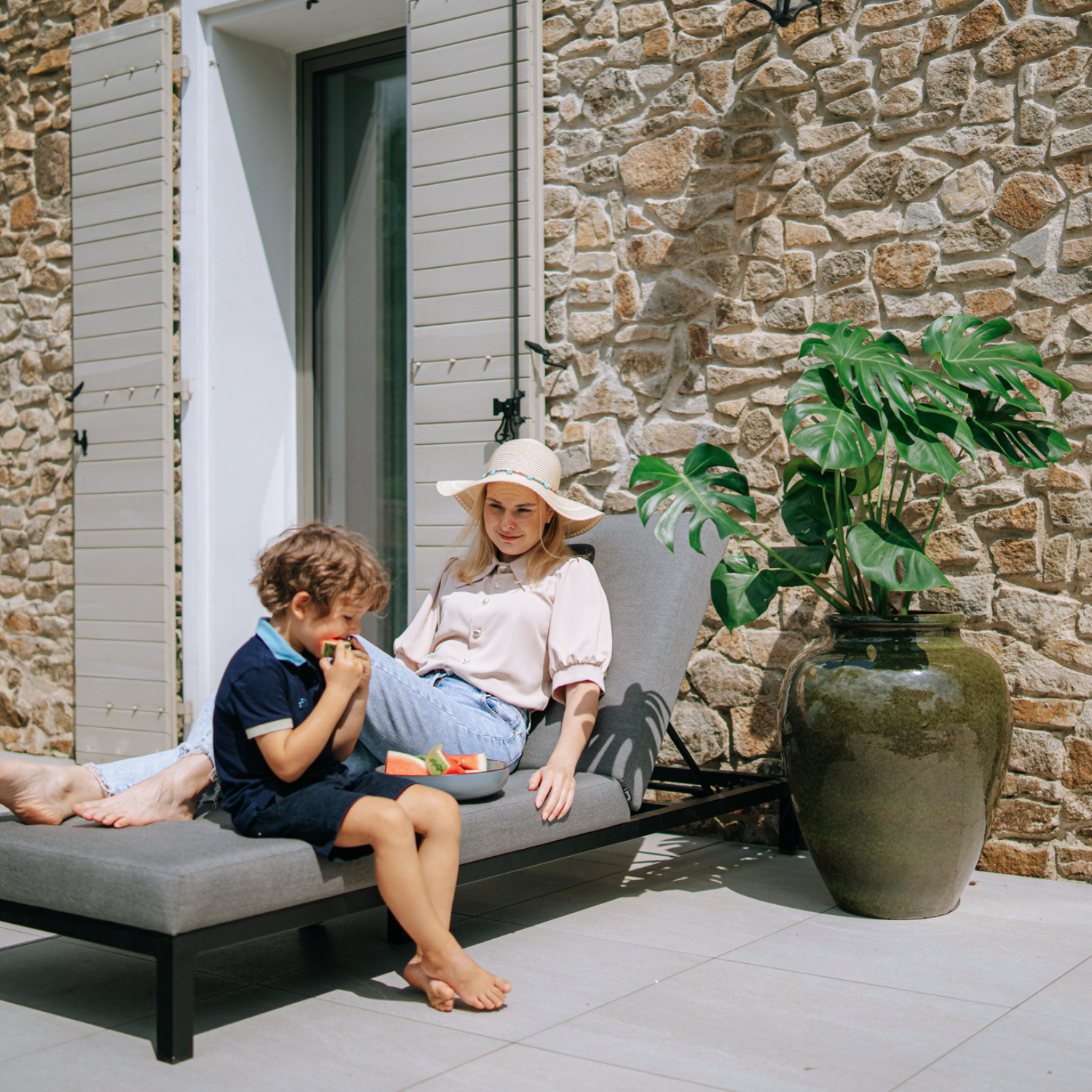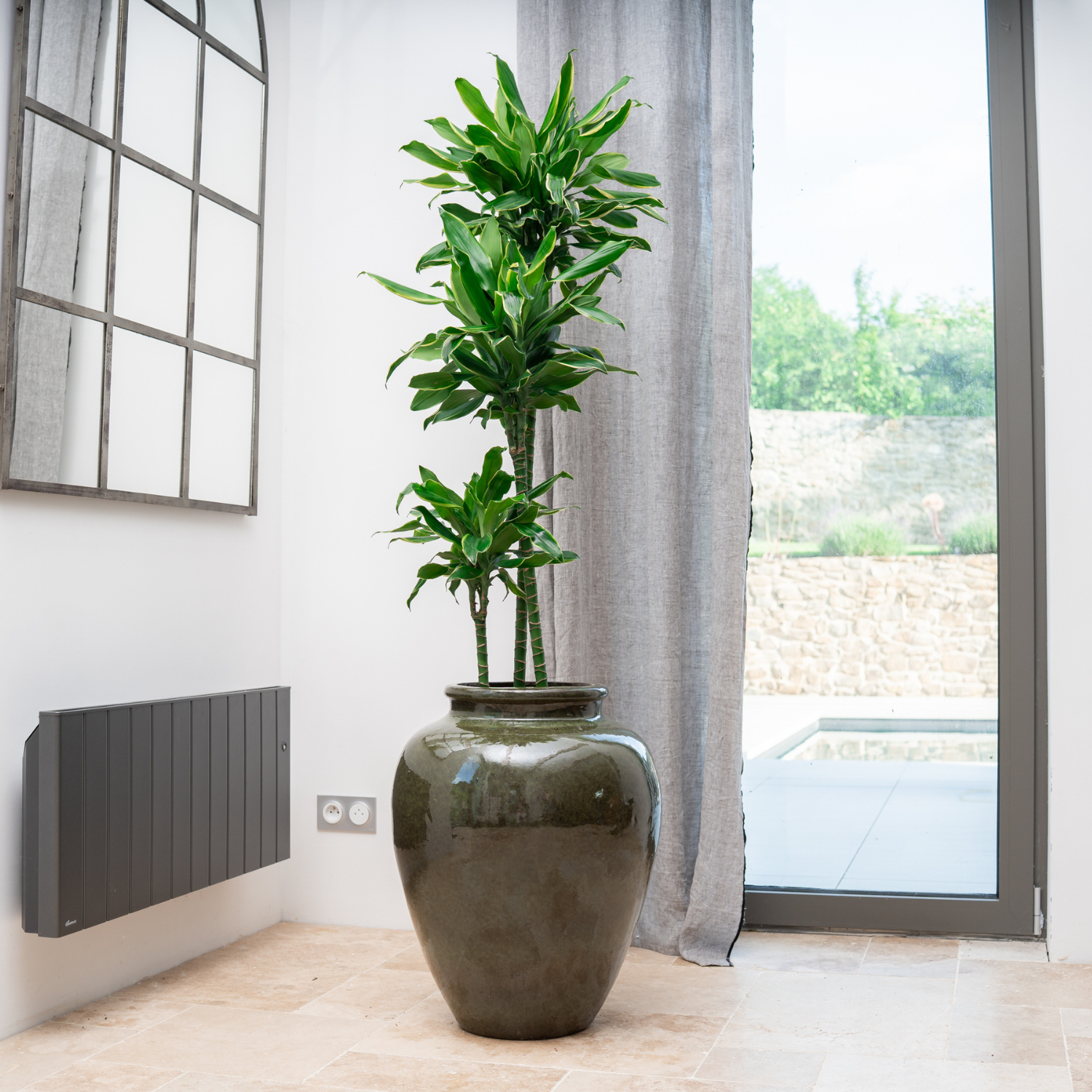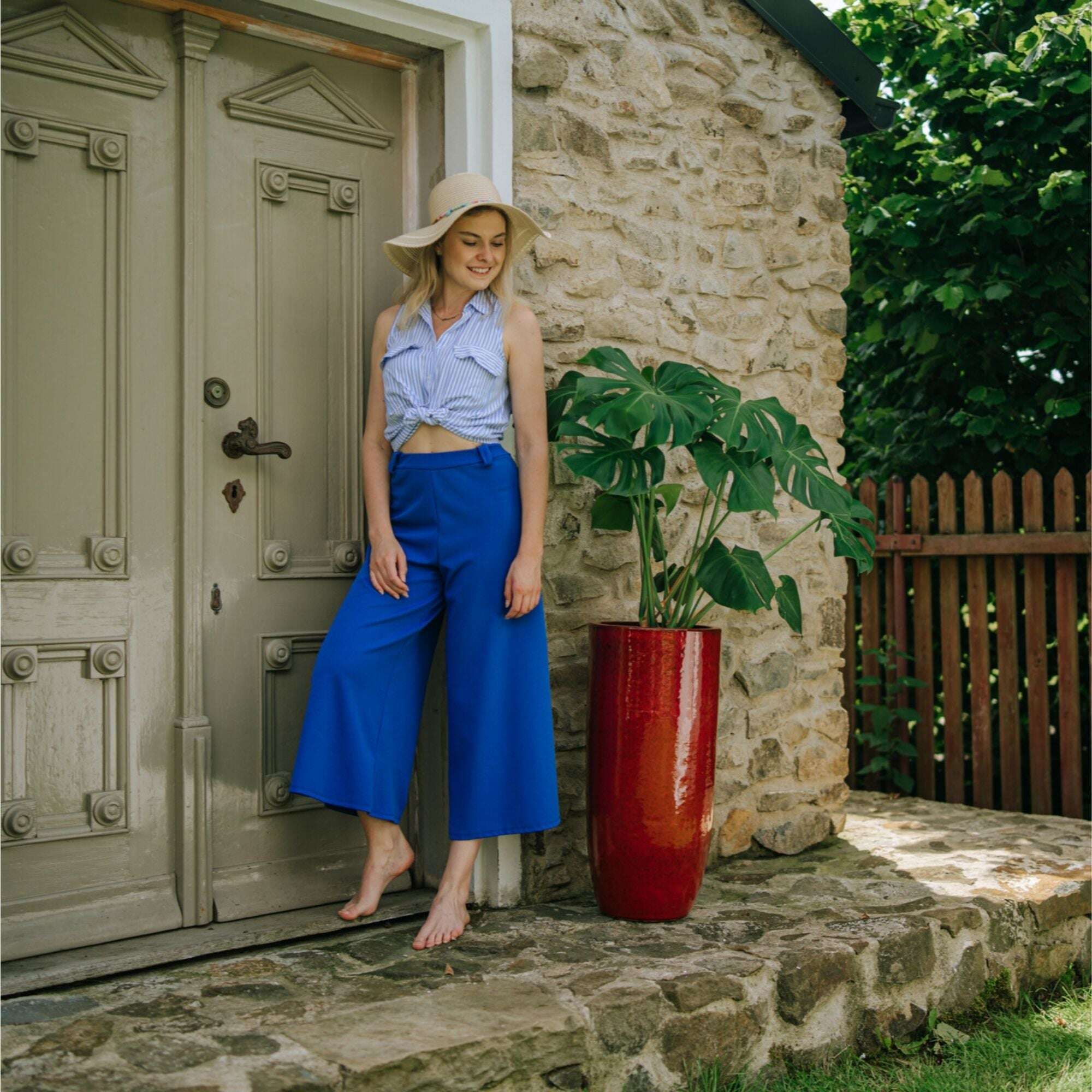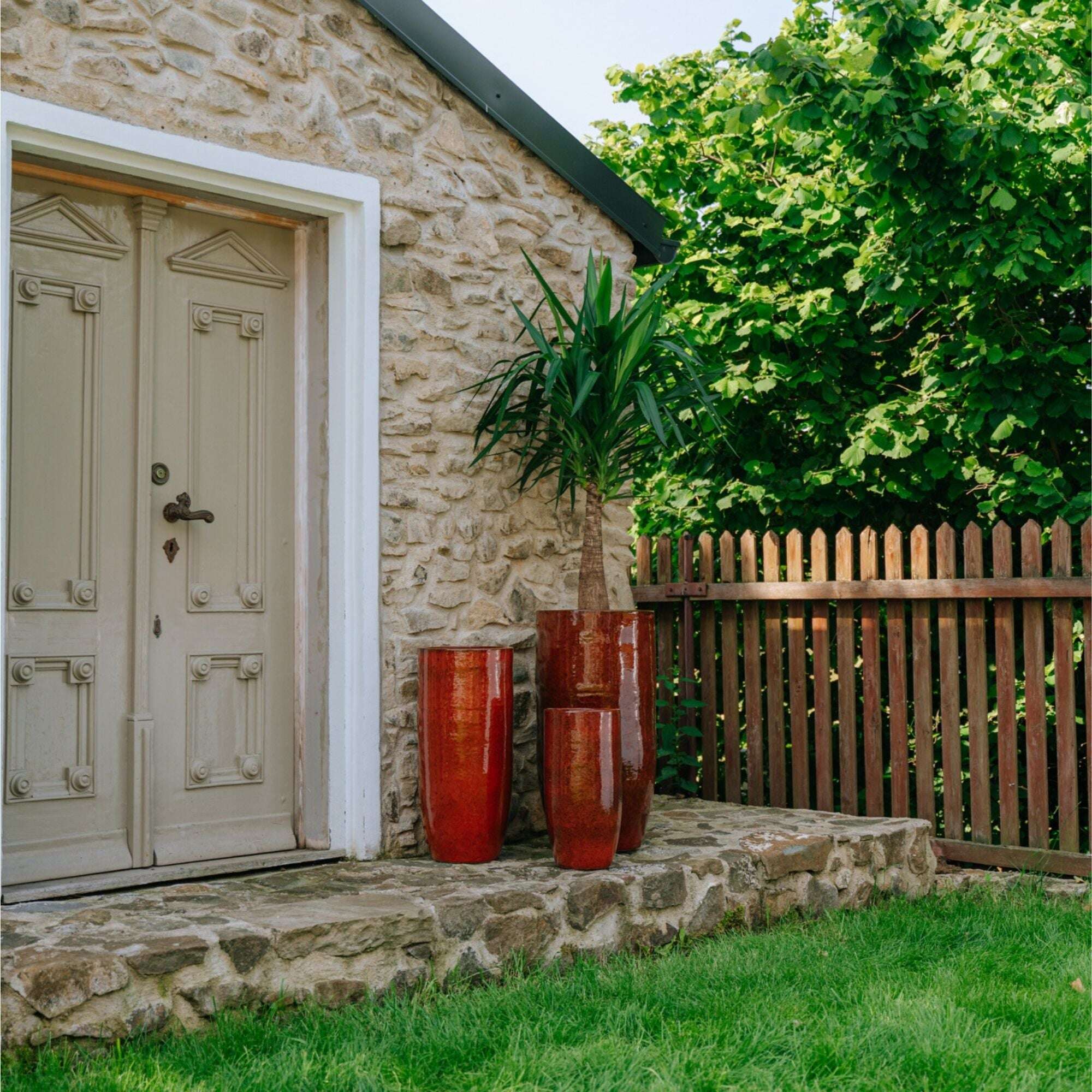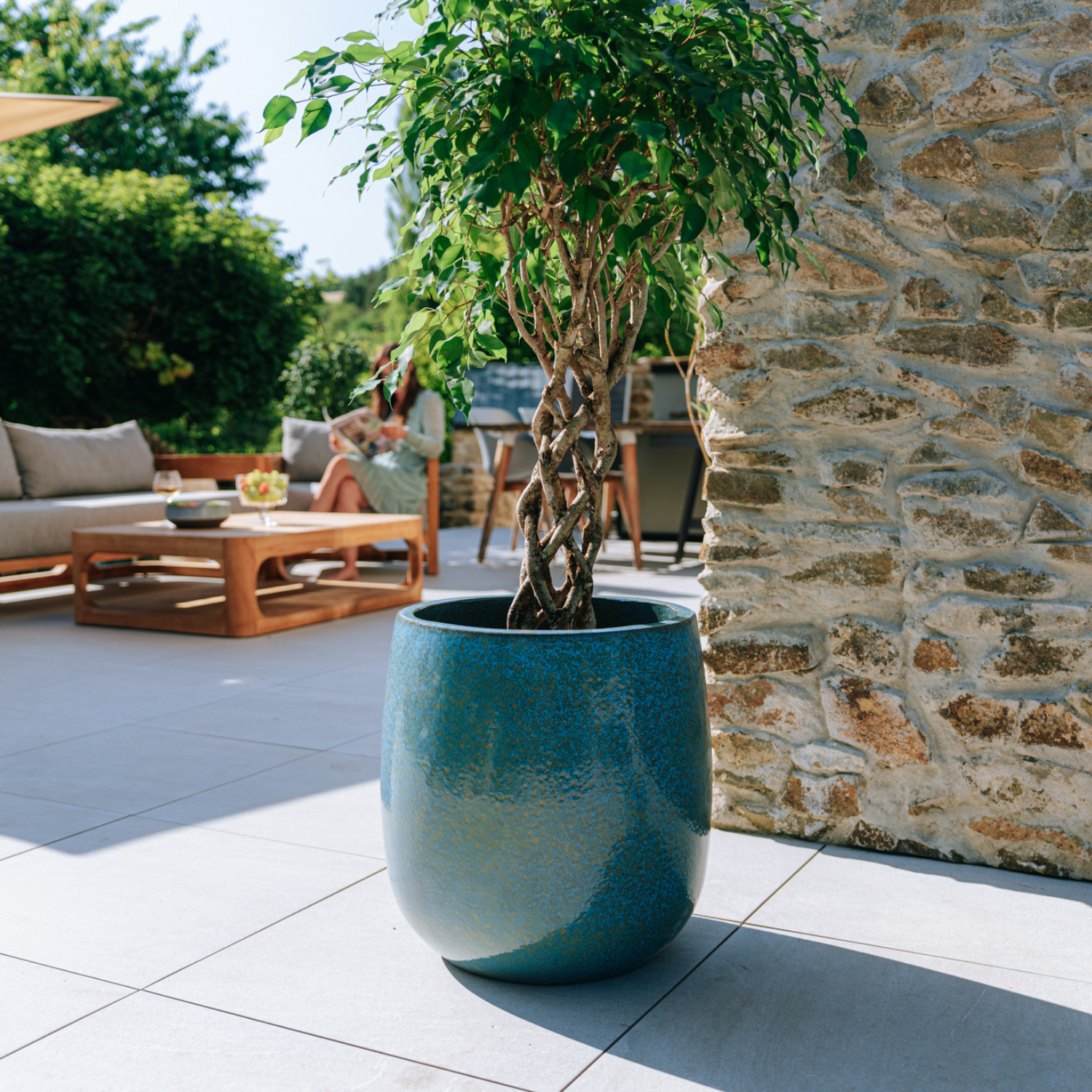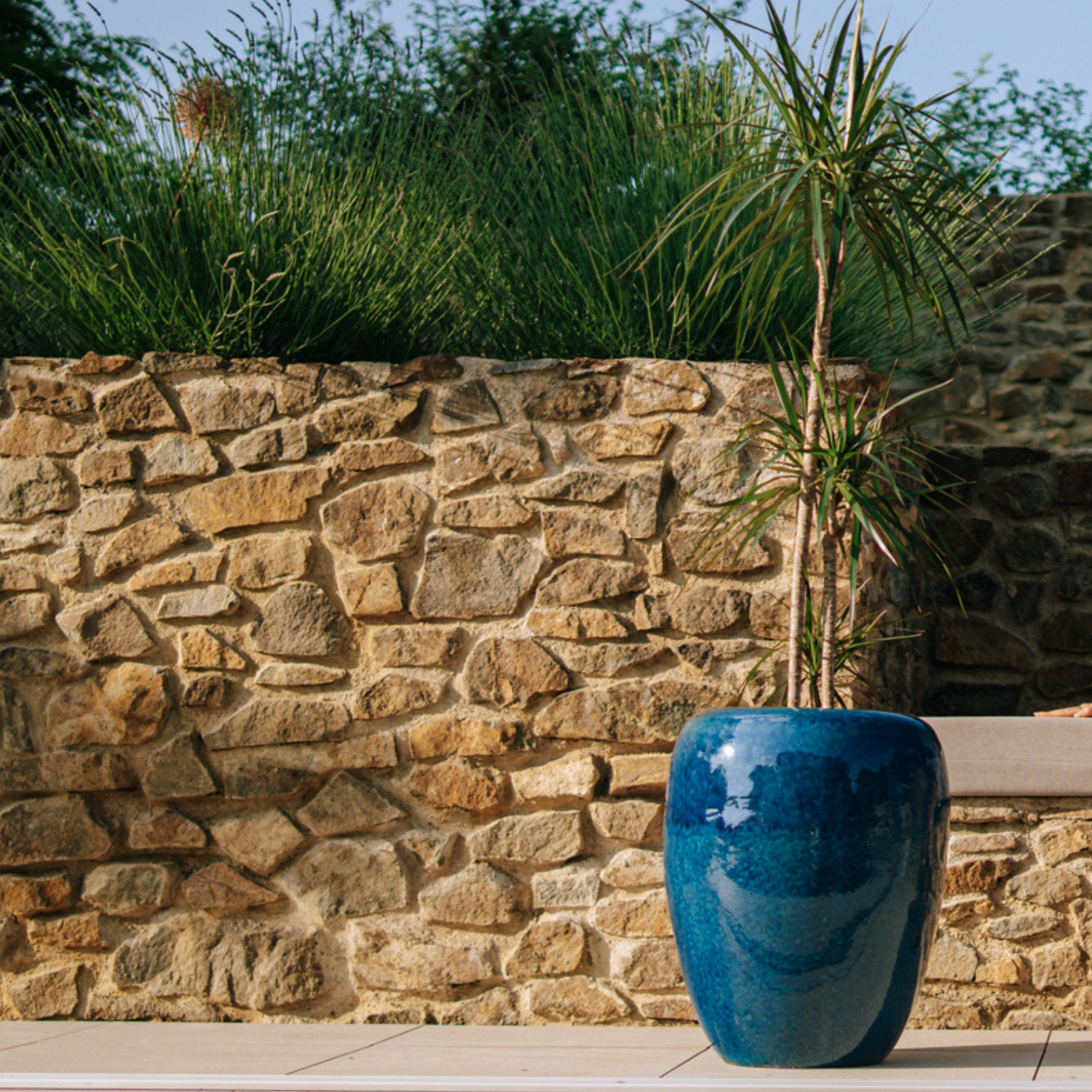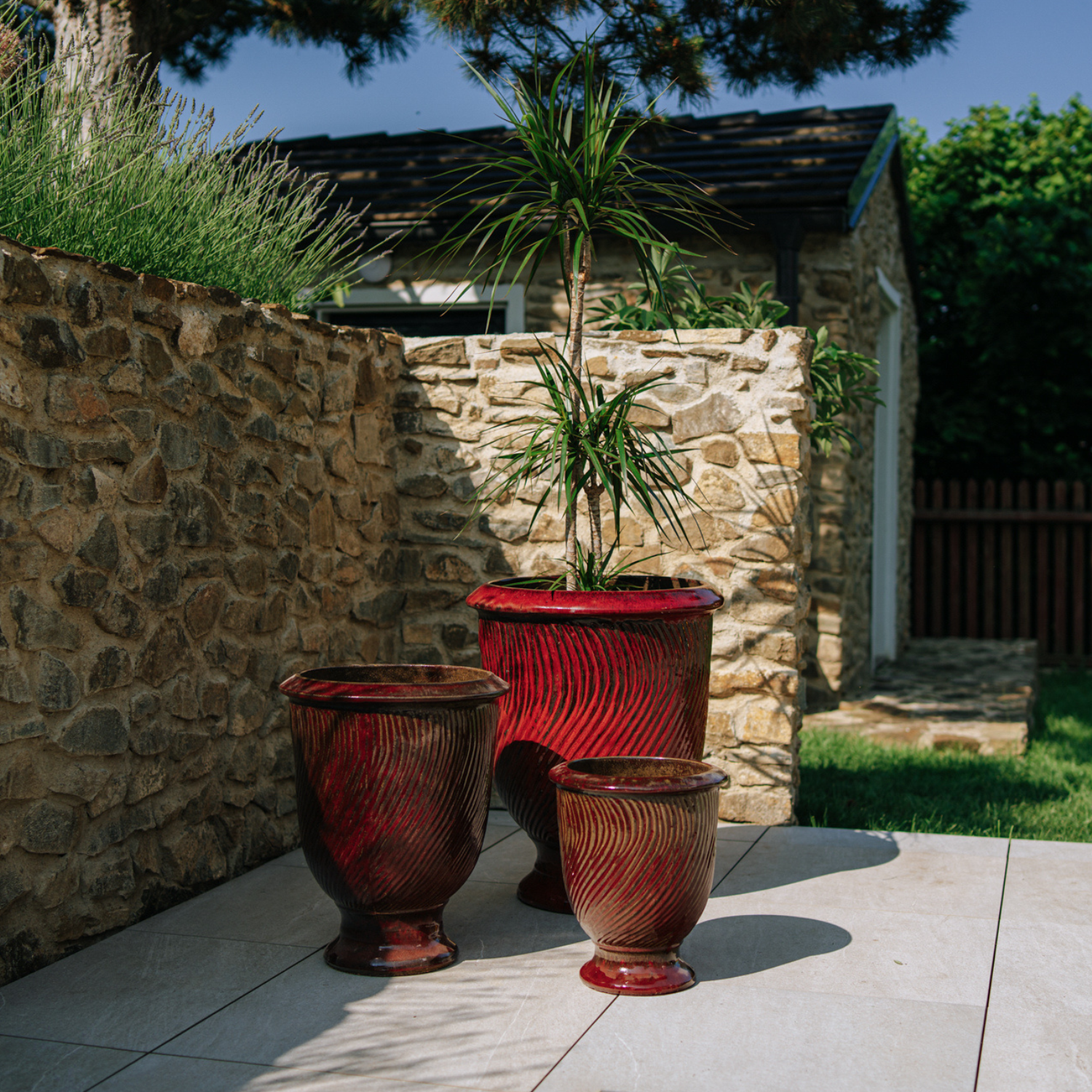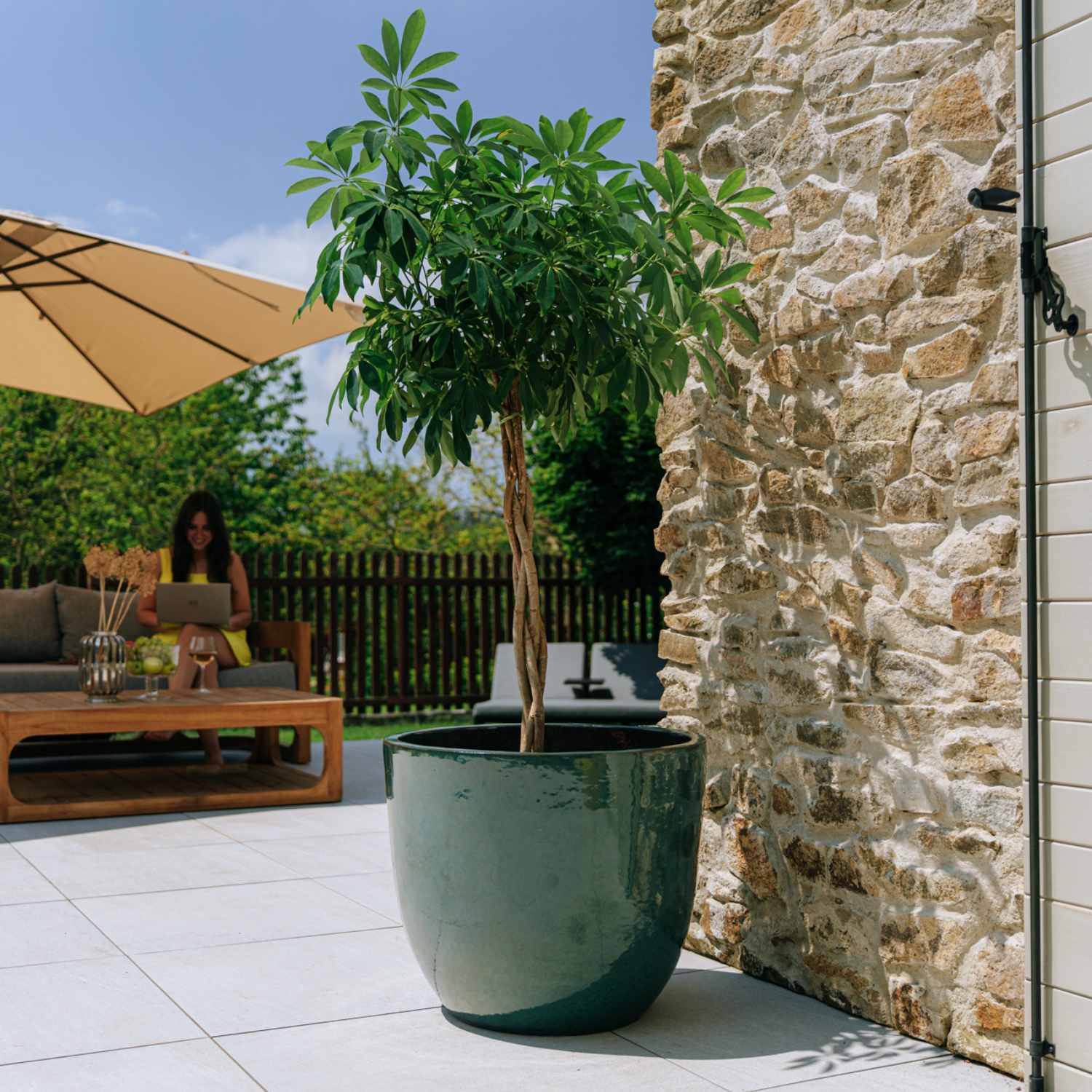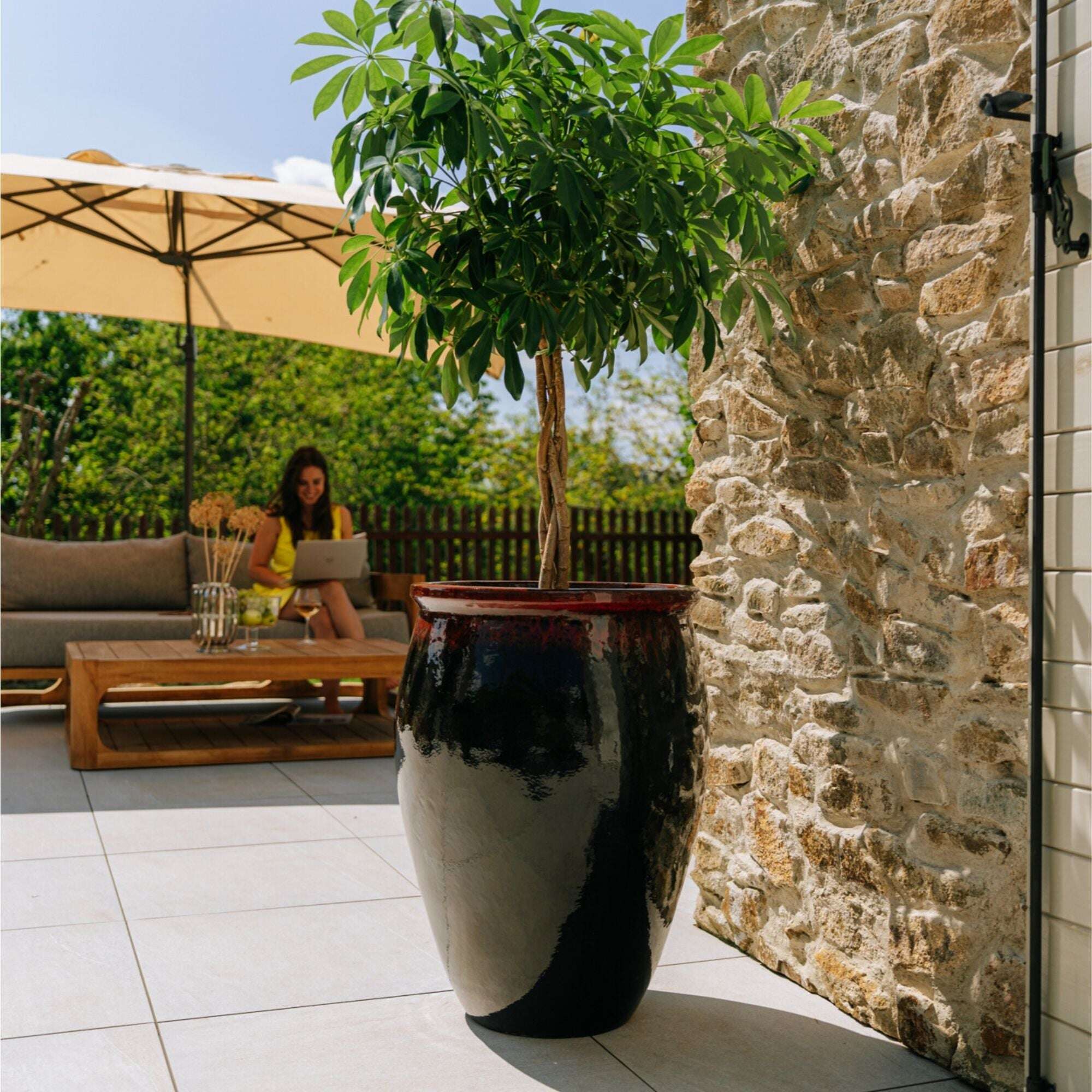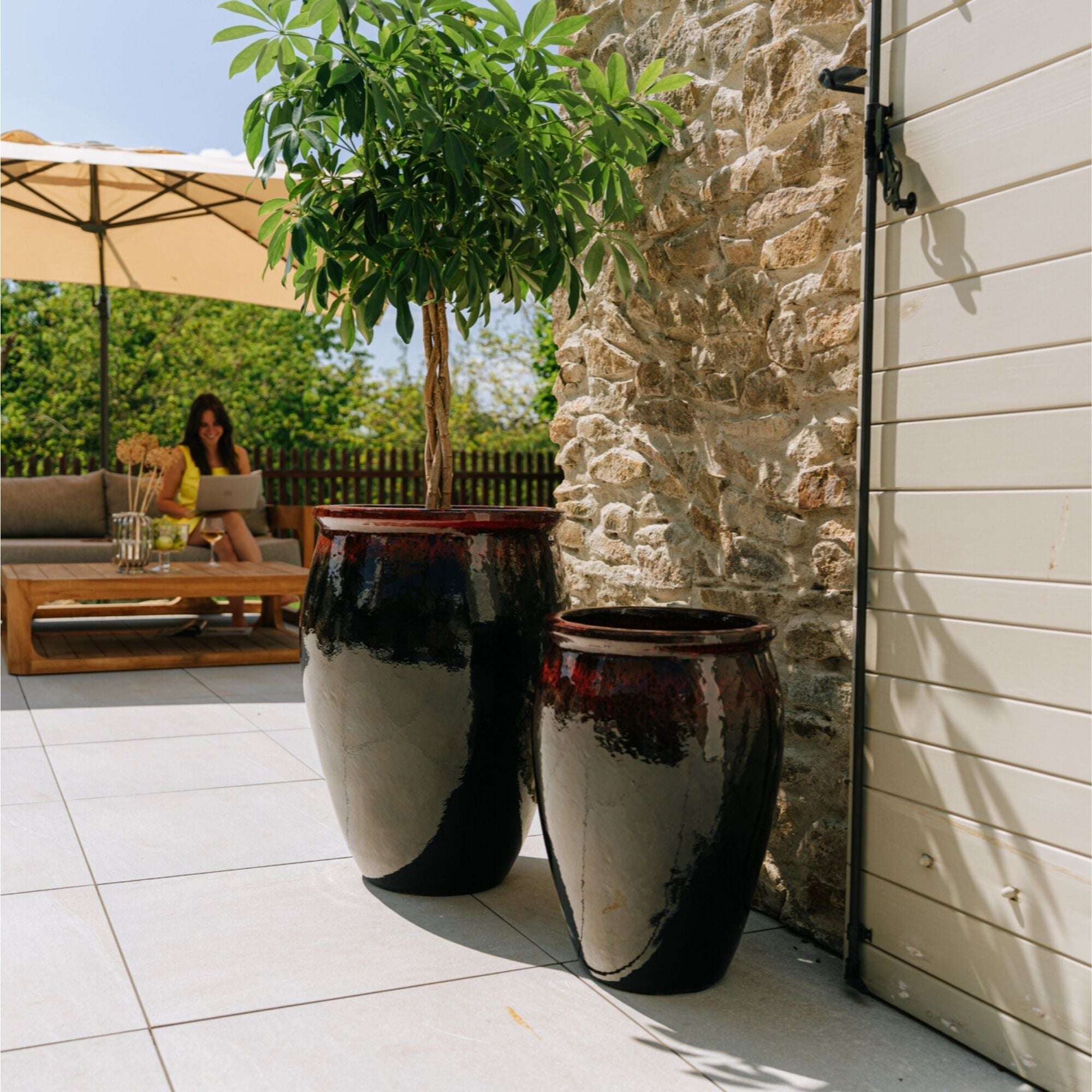Item: How to repot your plants?
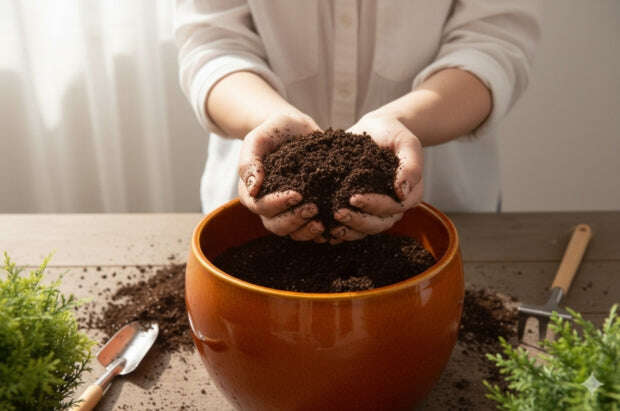
How to repot your plants?
Repotting a plant is an essential step for its health and growth. If you have chosen a ceramic pot, it’s an excellent decision: aesthetic, durable, and often more stable than a plastic pot, it also enhances your plants. However, repotting in a ceramic pot requires some specific precautions. Follow our step-by-step guide to provide your plants with a new container suited to their needs.
When to repot?
Knowing when to repot is crucial to avoid stressing the plant or compromising its growth. Here are the signs and seasonal indications to consider:
Signs that it’s time to repot:
-
Visible roots: If the roots are coming out through the drainage holes or forming a dense network on the surface of the substrate, it’s time to repot.
-
Slowed growth: A plant that is no longer growing or seems "stuck" in its pot may need more space.
-
Compacted substrate: Over time, potting soil loses its structure, becomes compacted, and retains too much water, which can cause root rot.
-
Unstable plants: If your plant becomes wobbly or leans, it is often a sign that the pot has become too small.

The ideal season for repotting:
Spring is the most favorable period for repotting. Plants then actively resume their growth and can better recover from the stress related to changing pots.
Periods to avoid for repotting:
-
Winter: Plants enter dormancy and their root activity is minimal. Repotting them during this period can slow their growth and cause unnecessary stress.
-
Periods of high heat: In summer, if temperatures are very high, some plants may suffer more from repotting, especially if they are sensitive to direct sunlight.
In general, young plants need to be repotted every 12 to 18 months, while mature plants can be repotted every 2 to 3 years.
How to ensure good drainage?
Drainage is essential to avoid water accumulation in the pot, which could cause root rot.Ceramic pots, often aesthetic but sometimes not very porous, require special attention. Here’s how to proceed:

-
Choose a pot with a drainage hole: Make sure your ceramic pot has a hole at the bottom. If not, repotting will require a thicker drainage layer.
-
Add a layer of clay pebbles: Place clay pebbles or gravel at the bottom of the pot to create a space that will collect excess water.
-
Use a geotextile: Place a small piece of geotextile fabric or a filter over the pebbles before adding the potting soil. This will prevent the substrate from mixing with the pebbles and maintain good water circulation.
-
Choose a suitable potting soil: Opt for a light, well-draining mix suitable for the type of plant (cactus, succulents, green plants, etc.).
Repotting: the step-by-step guide
Here is a detailed guide to repotting your plants in a ceramic pot, step by step:
Prepare the materials
- New ceramic pot
- Suitable potting soil
- Clay pebbles or gravel
- Geotextile or filter
- Shovel or small trowel
- Gardening gloves

1. Remove the plant from its old pot
Gently tap the pot to loosen the root ball.
If the roots are very tight, gently loosen them with your fingers.

2. Prepare the new pot
Place a layer of clay pebbles at the bottom of the pot.
Cover with a geotextile to keep the pebbles in place.

3. Add soil and potting mix
Fill the pot with some potting mix, leaving enough space to place the plant.
Make a small hollow in the center to accommodate the root ball of the plant.

4. Place the plant and complete the substrate
Set the plant in the hollow and add potting mix around it, gently pressing with your fingers.
Ensure that the plant is stable and that the collar (base of the stem) is level with the rim of the pot.

5.Water with care
Water lightly to help the substrate settle.
Avoid drowning the plant immediately, especially if the pot is made of glazed terracotta.
Repotting your plants in a ceramic pot is not just an aesthetic gesture, it is above all an act of care to ensure their health and growth. By respecting the right repotting times, ensuring effective drainage, and following our step-by-step guide, your plants will thrive.

